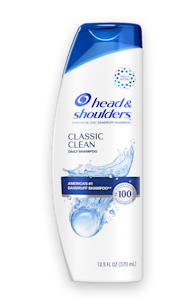WHICH HAIR TYPE DO I HAVE?

A little bit wavy, sometimes straight, frizzy in winter and oily in summer? Sometimes it’s not as straight-forward as you might think to discover your hair type.
Everyone’s hair is unique, and you should take the time to get to know your hair properly so you can treat it right.
But luckily, there are some similarities between all hair types. Knowing these core factors, plus the needs that are specific to your own individual hair, will help you keep it in the best possible shape.
How can you tell your hair type?
Aside from hair color, there are basically three important factors that go into making your unique hair type:
Curvature
Diameter
Density
These characteristics have all come down your family tree; they’re mostly determined by your genes.
The effect produced by your genes determines how your hair grows out of your scalp, and that ultimately determines your hair type.
Curvature
Curvature is another word for ‘curl’ or ‘curliness’. Usually, if you ask someone their hair type, they’ll say how curly, coiled, wavy or straight it is.
Remember those genes that affect your hair type? They’re at work again here, in your follicles, which are the structures beneath your skin where hair is actually grown.
Your genes determine what shape the follicles will be, and the shape of your follicles affects how curly or straight your hair will be.
Straight hair: Naturally straight hair grows from straight, symmetrical follicles
Wavy hair: A follicle that is slightly curved at its base produces wavy hair
Curly hair: The follicle that makes curly hair looks bent like a hockey stick
Kinky textured hair: Fish-hook shaped follicles produce the tightest curls
Curliness can influence more than just the look of your hair.
Curled hair can actually be more prone to dryness and damage, because the natural oils from your scalp have a harder time traveling down the full strand of hair to moisturize it.
If you’re blessed with a halo of gorgeous curls, lucky you! Find out how to take care of them and keep them moisturized in with our curly hair tips article.
Diameter
The diameter of your hair is another way of describing the thickness of each individual strand of hair.
If your hair has a small diameter, you can describe it as ‘fine’. Hair with a larger diameter might be described as ‘thick’ or ‘coarse’.
You’re probably already used to describing your hair this way and will know that most of us are somewhere in the middle.
Fine hair and coarse hair have their own unique challenges. Fine hair is really flexible and can become limp and “fall flat” over time, especially if it’s naturally straight. Coarse hair can be less flexible, and more difficult to style.
Density
The density of your hair is the number of hair fibers on your head. It’s genetic and you’ve had the same number since you were born!
However, you’ve probably noticed that you have a bit more hair now than you did back then. So how does that work?
Well, not all of your hair follicles are at the same stage of growing hair at any one time.
In fact, your hair grows in cycles. Sometimes a follicle is busy growing hair, sometimes it’s resting, sometimes it’s shedding the old hair fiber, and sometimes it’s empty and taking a break.
The number of follicles which are actively growing hair will have an effect on your hair density.
And what about the follicles that are ‘shedding hair’? Don’t be alarmed – it’s totally normal. In fact, most people shed about 100 fibers every day.
Changes in your life stage can also affect your hair density. As you get older, the percent of follicles in the “empty” stage increases, and your hair density decreases, which is why many elderly people have thinner hair.
Pregnancy, on the other hand, can make women’s hair denser, as more follicles stay in the growing and resting stages (after childbirth this ‘extra’ hair may be shed as your hormones return to normal).
It all starts with the scalp
Everyone’s hair is different, but that doesn’t mean we can’t all have strong, healthy-looking hair.
The big similarity that all hair types have in common is that the state of your scalp will help determine the quality of the hair that grows through.
Your scalp is the foundation for your hair, and just like plants need good soil to grow, a scalp in good condition is better at caring for growing hair so it’s formed properly.
Scalp issues like dandruff can actually cause damage to hair as it grows.
A good scalp care shampoo like Head & Shoulders can help keep your scalp in shape so your hair can be at its best.






